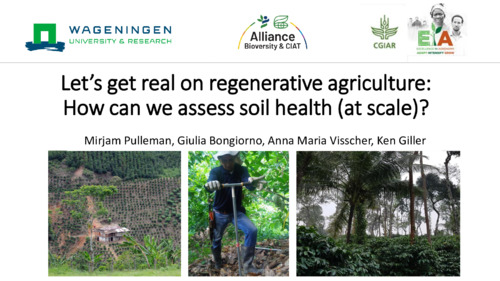Let’s get real on regenerative agriculture: How do we assess soil health (at scale)?
Abstract
The concept of regenerative agriculture has rapidly gained momentum among agri-food companies, governments, NGO’s and farmers. Although there is no widely accepted definition, different interpretations of this concept emphasize the importance of restoring and enhancing soil to generate multiple benefits for society and for farmers. The premise is that regenerative agriculture, by strengthening soil health and associated ecosystem services, helps to make agroecosystems more productive and resilient, while improving farmers’ livelihoods. A focus on regenerative agriculture further creates important opportunities to mitigate greenhouse gasses, thereby helping agrifood companies to meet their ambitious targets towards achieving “net zero” supply chains. The popularity of regenerative agriculture has created an overwhelming demand for indicators that can be used to assess and monitor soil health in robust and cost-effective ways, while obtaining evidence of the links between regenerative practices, soil health and the assumed benefits (agronomic, environmental, social).
Conceptually a focus on soil health, considering biological, physical and chemical soil properties and processes and their importance for multiple soil functions, has proven to be attractive for practitioners. Yet, there are many challenges associated
with the measurement of soil health and the interpretation of indicator values in terms of soil functionality. Based on literature review and our experiences working with key stakeholders in the cocoa and coffee sectors, we discuss progress and challenges for the development of soil health indicator frameworks and their application at scale.
Special emphasis is on biological soil indicators, given their potential to respond quickly to management interventions, as well as the key role of soil biota for soil functions. Yet, how can they be assessed at scale, and how are they interpreted?

